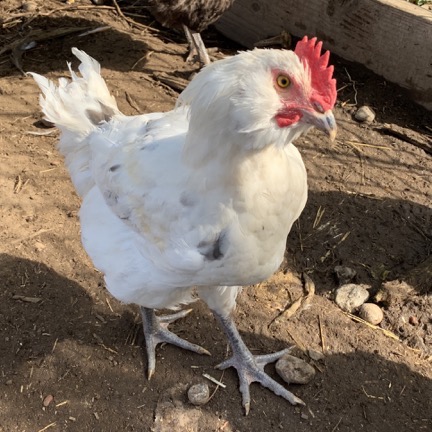Clearing up something that might not be apparent to non-pilots.
Yesterday, I got the following tweet in my notifications from someone who had never tweeted at me before:
@mlanger, I watched one of your videos last night. I was laying in bed wondering why no one has put a parachute on a helicopter. The Apache Longbow has a pod at the top of the mast. Put a rocket-powered parachute in it! I guess Curti Aerospace was listening with the Zefhir.
— AvGeekStuff (@AvGeekStuff) September 15, 2019
This was mind boggling to me. I replied:
Why would a helicopter need a parachute?
— Maria Langer 🚁 (@mlanger) September 15, 2019
His response came later in the day:
I don’t know, I was watching you practice auto rotations and just thought “in case of engine failure, wouldn’t a parachute be better?” I guess if it were a good idea, someone would have done it before now.
— AvGeekStuff (@AvGeekStuff) September 15, 2019
He was referring to one of my YouTube videos, R44 Helicopter Autorotation Practice. That video records my practice session with CFI Trevor Hale at Wenatchee Pangborn Memorial Airport early one July 2019 morning. What I’d hoped to accomplish with the video is to take some of the mystery out of autorotations for non-pilots and to take some of the fear of practicing and dealing with engine failures for helicopter pilots. The video shows the two of us sitting in the cockpit while I simulate one engine failure after another by cutting the throttle and disengaging the drive system from the rotor system. The only thing keeping the blades spinning is me doing what I’ve been trained and tested to do for the past 20 years: full (or almost full) down collective to reduce drag and pitch to maintain optimum airspeed and rotor RPM while flying to a suitable landing spot.
What I guess a lot of people still don’t get is that when a pilot performs an autorotation, she has full control of the helicopter and is flying the helicopter. The pilot does not become a passenger, as she would if she lost control. She can move the helicopter in any direction except up, steering it as necessary to make the spot.
Now let’s say a helicopter has a ballistic parachute system at the top of the rotor mast as this person on Twitter suggests. Can someone explain to me why a pilot might deploy this parachute, thus giving up control of the aircraft, in the event of an engine failure when autorotation makes it possible to stay in control all the way to the ground? I’m not seeing it.
Some of you might know that Cirrus airplanes have this a ballistic parachute system built in. It’s not designed for engine failures, however. It’s designed for situations when the pilot cannot control the plane to a safe landing. All pilots, regardless of what they fly, are trained to deal with engine failures during various stages of flight. If there’s nothing physically wrong with the aircraft’s flight controls or surfaces, there’s really no reason to rely on a parachute to get you to the ground safely. Start the appropriate emergency procedure and fly the aircraft to the ground.
And let’s be honest now: how often do engines fail? Bored one afternoon? Go to the NTSB’s web site and read a bunch of accident reports for airplanes and helicopters. It’s all there. How many of them were caused by engine failures? How many of them were caused by mechanical issues at all? And how many were caused by pilot error?
It isn’t engine failures that pilots should be fearing. It’s their own stupidity. (And yes, I’m a poster child for that.)
So I posted my response, challenging him to explain what I was apparently missing:
Why would a parachute be better than a pilot flying the aircraft to a relatively safe and controlled landing to a spot she chooses on the ground? Who knows where a parachute might take you?You understand that I was flying the aircraft during each autorotation, right?
— Maria Langer 🚁 (@mlanger) September 15, 2019
I hope I educated him and any others who don’t quite understand what happens if a helicopter engine quits and the pilot does what she’s trained to do.

